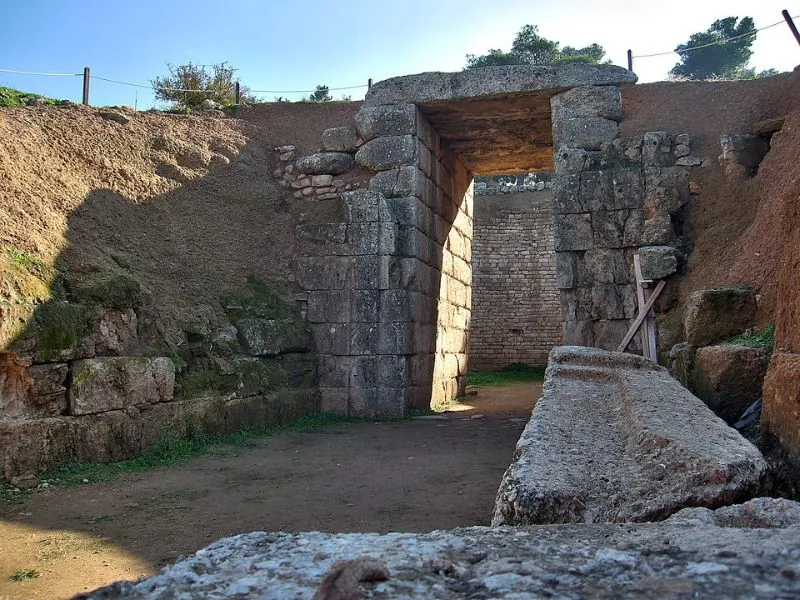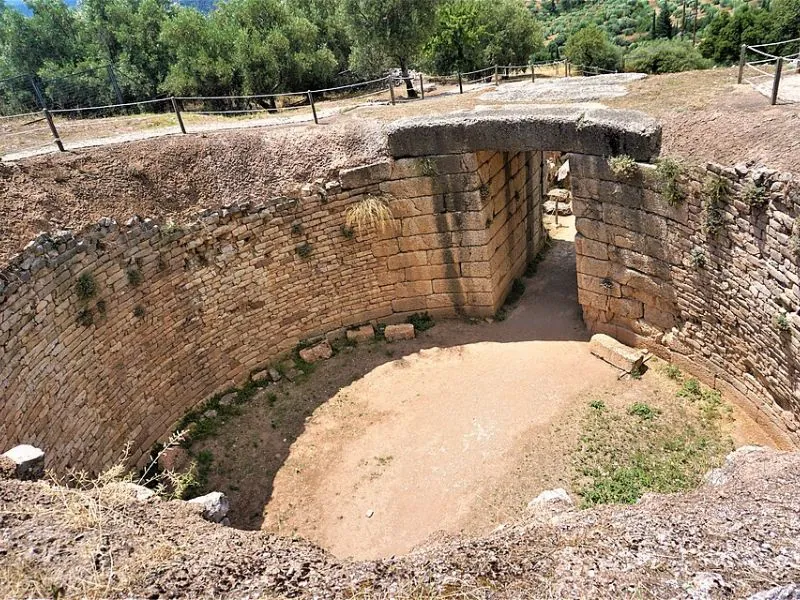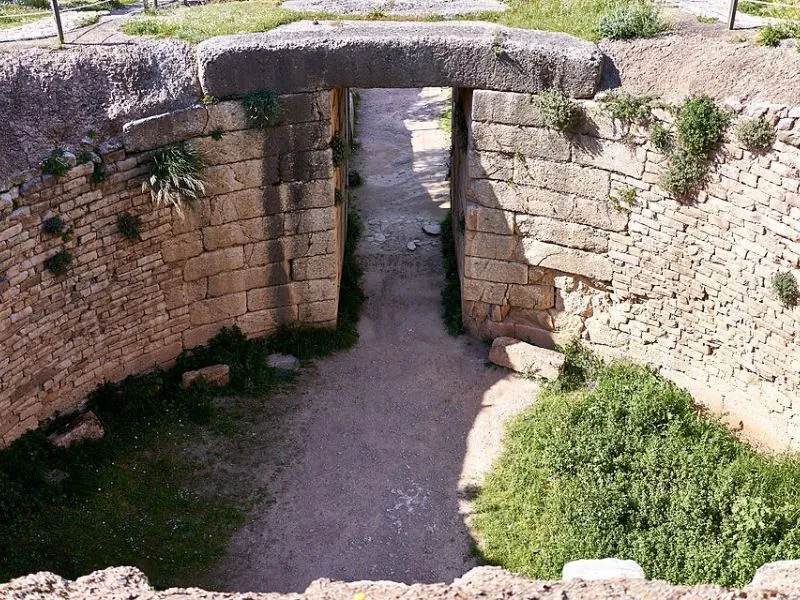
A few paces north of Mycenae’s museum path, a weather-worn passage dips into the hillside and ends at the Tholos Tomb of the Lions in Mycenae. Raised around 1450 BCE, this beehive-shaped burial once rivalled the citadel’s larger monuments.
Although its dome has long since caved in, the tomb’s strategic placement near the Lion Gate and its pioneering architecture make it a crucial bridge between early experimental tholoi and later mega-structures like the Treasury of Atreus.

Architect Alan Wace grouped Mycenae’s nine royal beehives into three chronological waves. The Tholos Tomb of the Lions in Mycenae belongs to his second group—monuments built roughly 1480-1400 BCE that introduced ashlar-lined passages and relieving triangles but still retained rubble domes.
Ceramic sherds and construction style place the Lion tomb at the start of this period, around 1450 BCE, making it contemporary with palace expansion and the first stirrings of Mycenae’s maritime dominance.
Dromos & Stomion
Relieving Triangle
Above the lintel, builders inserted a small triangular void to divert stress—a structural trick first tested in the Tomb of Aegisthus and perfected later for the Lion Gate.
Thalamos
Originally 14 m across and perhaps 13 m high, the corbelled dome collapsed in antiquity, leaving an open-air bowl ringed by stubby stone courses. Fragmentary inlays of bronze and ivory lions (now lost) earned the tomb its modern name.
Orientation
Uniquely, the doorway faces north-east toward the Lion Gate, ensuring every visitor glimpsed the tomb before entering the citadel—a subtle reminder of dynastic lineage.

Digging the chamber and passage displaced some 1,500 m³ of soil—about six months’ labour for a 10-person crew. Stone came from nearby Panagitsa Hill; workers levered blocks onto sledges, dragged them up earthen ramps and stacked 30 concentric rings that leaned inward until a single keystone locked the dome.
The advanced ashlar revetment of the dromos suggests masons returned after the main build to “modernise” the façade in line with newer tombs.
Ancient looters left little, yet archaeologists recovered:
Three pit burials in the floor were empty, leaving the original occupants—perhaps a junior branch of the ruling house—anonymous.

The Lion Gate relief is Mycenae’s ultimate power emblem; echoing that imagery in a nearby tomb underscores a deliberate propaganda program.
By aligning tomb and gate, architects forged a visual narrative: here lie the ancestors whose strength (lions) guards the living citadel. Positioning the doorway on the main tourist trail ensured the message reached every envoy and trader.
Though overshadowed by the larger Treasury of Atreus, the Tholos Tomb of the Lions in Mycenae captures a pivotal moment in Aegean architecture: the leap from rough-hewn rubble burials to ashlar-faced monuments that blend engineering with royal pageantry.
Today its collapsed dome frames nothing but sky, yet the tomb still voices the Bronze-Age ambition that turned a rocky hilltop into the seat of a legendary kingdom—and invites every visitor to imagine lions, kings and ceremony echoing down its once-sealed corridor.